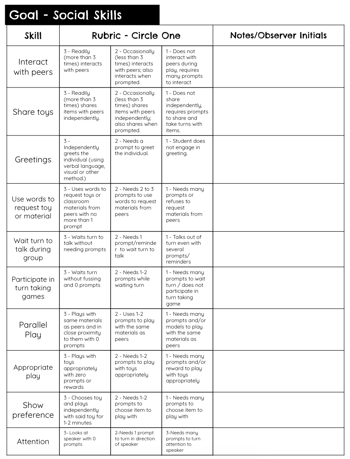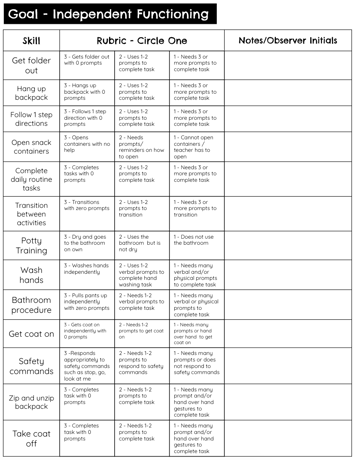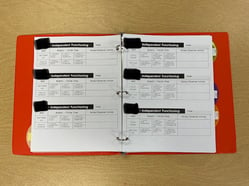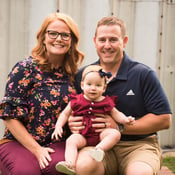Let's talk about one of the behind the scenes duties of a special education teacher...GOAL TRACKING!
Tracking academic goals is one thing, but how on earth do you track those social and independent functioning goals?! Observational notes get lost in the stacks on my desk and quite frankly take too long to write. Checklists aren't detailed enough to show the behaviors being observed in full. Obviously as an educator with a million things on my mind, there is no way that I can just remember the details of a behavior when I finally get to my computer to document it. I have tweaked my system so many times but finally feel like I have a good handle on it this year.
 |
 |
The next step is setting up the data collection binder. I copy and paste the goals from the main rubrics and create data collection sheets for each student. I duplicate the set of goals 3 times on a page then print 2 copies so each page is double sided. This gives me 6 sets of the same goals per sheet of paper which allows me to complete 6 trials of data collection. When writing IEPs I usually use 4 out of 5 trials as my scoring method so this works perfectly. I then compile all of the data collecting sheets in a binder and we are set to go!
 |
 |
 |

|
About The Author My name is Lynn Wilke. I live in Aviston, IL with my husband, Adam, and daughter, Aris. I am a self contained early childhood teacher at Highland Primary School. I have worked in a blended preschool setting previously but love the small group instruction that my self contained class offers. My kiddos are each unique in their own way and receive individualized attention daily. We use ABA to work through academic readiness, language building, fine motor, and many other skills throughout the day. I can't wait to share some of my classroom with you through this blog! |
